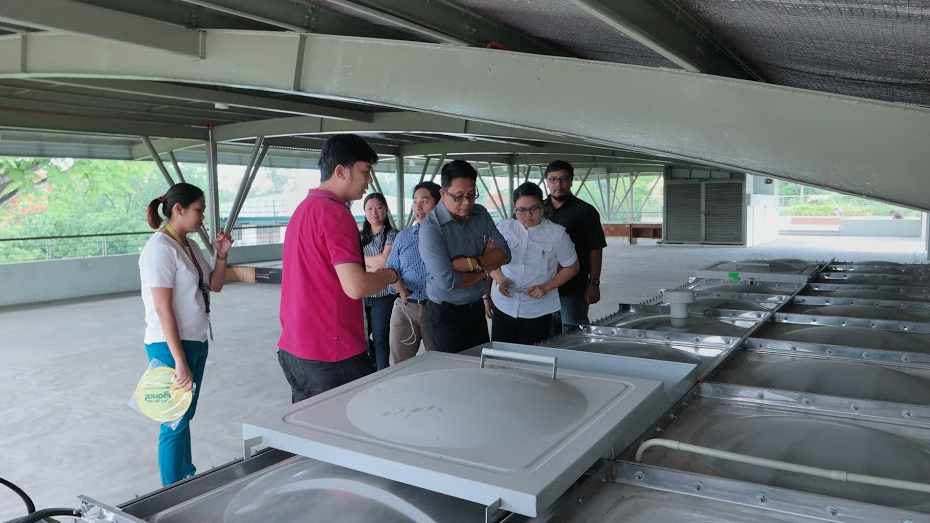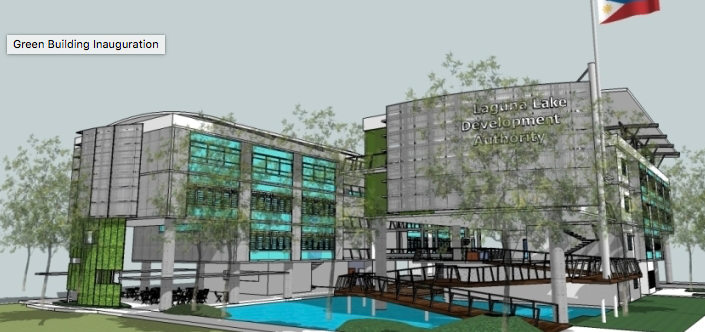Laguna Lake Development Authority leads green building innovation in the Philippines
Tucked within the National Ecology Center compound in Quezon City is the Philippines’ first and only green government building, the headquarters of the Laguna Lake Development Authority (LLDA), a leading example of green innovation in the country.
The Health Care Without Harm - Asia team was recently welcomed by the LLDA, led by General Manager and Presidential Adviser for Environmental Protection, Secretary Nereus Acosta, Jr. for a tour of the facilities, showcasing how a climate-resilient and energy efficient building should be designed and built in a country like the Philippines.

HCWH-Asia staff with LLDA General Manager Secretary Neric Acosta
The HCWH-Asia team, led by Director Ramon San Pascual visited the LLDA Headquarters to learn more about how hospitals and health facilities in the country can learn or even adopt the LLDA building’s design and construction, to help lessen their environmental footprint and promote wellness among their staff and patients.

LLDA conserves and recycles water through its rainwater catchment treatment system.
“It is truly remarkable to see how a government agency like the LLDA is leading the green revolution in sustainable building and design,” expressed Mr. San Pascual. “The government should take the lead in demonstrating why we should take into full consideration long-term benefits especially in people’s health.”

Photo from the LLDA website
The first ever Philippine government structure to be accredited as a Green Building by the Building Ecologically Responsible Design and Excellence (BERDE), the four-storey structure was designed to enable reduction of at least 20% in energy consumption through shallow buildings that maximize natural daylight, windows that allow natural ventilation, and a rainwater catchment system for water recycling and conservation. The LLDA also presented their sustainable practices on waste management through their own Materials Recovery Facility (MRF).
“Several of our current environmental health problems, from climate change to air pollution, can be linked to the production and maintenance of the built environment,” added Mr. San Pascual. “This is why we encourage our hospitals to develop greener and healthier buildings.”
Buildings is one of the Agenda Goals of Health Care Without Harm’s Global Green and Healthy Hospitals, an international network of health systems and hospitals working towards becoming more environmentally sustainable.
(Photos courtesy of the LLDA)
